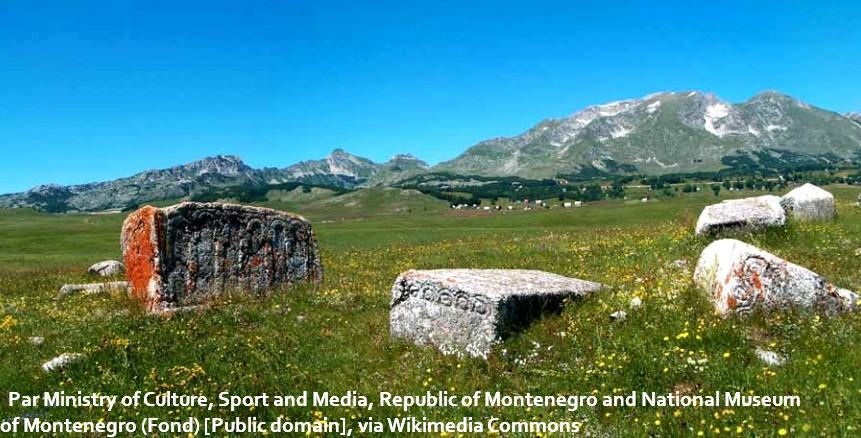
Published 2016, october, 22 – Author : Coline Mionnet
10 mountain sites inscribed as UNESCO World Heritage in 2016
This summer and as every year, 21 new sites have been selected to be listed in the UNESCO World Heritage, a chance for these protected areas that fascinate and arouse the interest of local or foreign tourists. Out of 21 sites, 10 are located in mountain areas, a great victory for these remote locations and those who have fought for the recognition of their natural or cultural particularities.
The Persian qanat in Iran
In the arid plain, water is drawn downstream from nearby mountain valleys via the old system of Persian qanats, that allowed agriculture to survive in the dry climate. Water flows by gravity along underground tunnels, dug in several kilometers. It is a traditional community management system which includes 11 qanats with areas of rest, mills and water tanks. Qanats are still operating today and allow to share and distribute the water equitably and sustainably. They are an exceptional testimony of an ancient tradition that can still continue and do good to the inhabitants of an isolated area.

Zuojiang Huashan rock art in China
In southwestern China, in the region of Guangxi Zhuang, 38 rock art sites illustrating the life and rituals of the Luoyue people have been recognized by UNESCO. They can be seen on the sacred Mount Huashan, along the Zuojiang River cliffs. These drawings would have been made between the 5th century BC and the 2nd century of our era. The karstic landscape (rock atypically shaped by water) is characteristic of this Chinese mountainous area.

Amazing Bradshaw Foundation website “The Rock Art of Huashan”
Two new natural sites classified in China
The Shennongjia Nature Reserve in Hubei province, in Eastern Central China, and the National Park of Laojunshan in Yunnan, Southwest, have been inscribed on the World Heritage list. Shennongjia Reserve is home to one of the largest primal forests in central China and to many rare animal species like the Clouded Leopard, Common Leopard and the Asian Black Bear. It would be one of the three centers of biodiversity in China. The site also occupies an important place in the world history of botanical research.

The Western Tien,
Kazakhstan, Kyrgyzstan, Uzbekistan
It is one of the largest chains of mountains in the world. The now protected part of the Western Tien Shan spans three countries, Kazakhstan, Kyrgyzstan, Uzbekistan, and rises from 700 to 7439 m above sea level. This mountain range is 2500 km long and provides habitat to an exceptional biodiversity including more than 400 animal species and species at risk such as the snow leopard. The Tien Shan also includes thousands of breathtaking glaciers !

Khangchendzonga National Park, India
Located in the heart of the Himalayas, in the Indian North State of Sikkim, Khangchendzonga National Park is covered with plains, valleys, lakes, forests, mountains and glaciers, with the third highest peak in the world, Mount Khangchendzonga which culminates at 8585 m. Some biosphere reserve sites in the Park are sacred and remain traditional places of pilgrimage and worship. The Government of Sikkim State has banned the ascent of the sacred peaks and the desecration of some lakes, mountains, rocks, caves and hot springs.
_on_morning.jpg
)
The Ennedi Massif, Chad
Northeast of Chad, the Ennedi Massif consists of canyons, valleys, cliffs, rock chimneys, and natural arches. The permanent waters of these canyons play a vital role in the ecosystem balance of the massif. But the Ennedi is also very well known for its thousands of rock art drawings, painted and engraved on the rock caves and cliffs.

Several sites of Antequera in Spain
In the South of Spain, Andalusia, the site includes three megalithic monuments : the dolmens of Menga, Viera and El Romeral Tholos (tomb), as well as two natural sites : the mountains of la Peña de los Enamorados and El Torcal. The megalithic sites have been built between the Neolithic and the Bronze Age with large stone blocks. The Torcal is a natural park with a karst landscape of limestone rocks which have their origin in the seabed of the Jurassic period, between 250 and 150 million years before our era.

The caves of Gorham, Gibraltar, Great Britain
South of Spain, Gibraltar, a British overseas territory, includes a 426 metres high eponymous rock. Gorham caves were formed by erosion and they were occupied by Neanderthals between 300 000 and 28 000 years before our era. Abstract engravings have been noticed on the walls of four caves.
Medieval Stecci, or tombs
Bosnia-Herzegovina, Croatia, Montenegro, Serbia
The property recognized by UNESCO includes 28 sites in Bosnia-Herzegovina, Serbia, Montenegro and Croatia. These cemeteries and medieval Stecci, or tombs, are typical of these regions. Dating from the 12th century to the 16th century, the graves are arranged in rows, as was the custom in Europe since the Middle Ages. Carved limestone, they include decorative patterns and inscriptions reflecting local specific traditions.

The archaeological site of Ani in Turkey
The site of Ani is a former medieval city that is located in the Northeast of Turkey, on an isolated plateau. In its hight in the 11th century, the city was the border country’s capital, Armenia and had 100 000 inhabitants before being largely destroyed by wars, the Mongol invasion and a destructive earthquake in 1319. The following Christian and Muslim dynasties marked the city unusual architecture. The walls and several churches can still be admired today.

Sources
New inscribed properties on the World Heritage list by Unesco
Definition of the karstic relief





